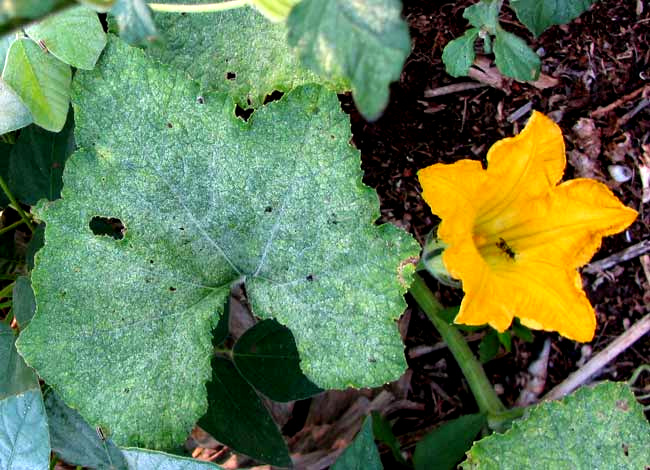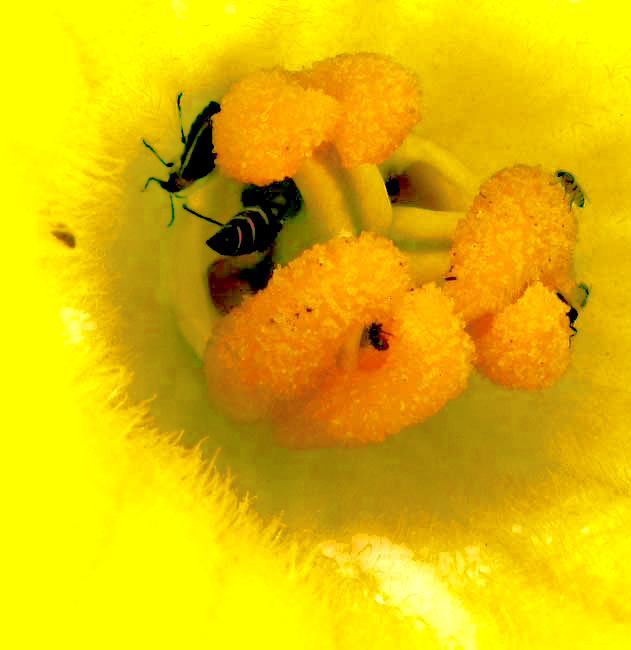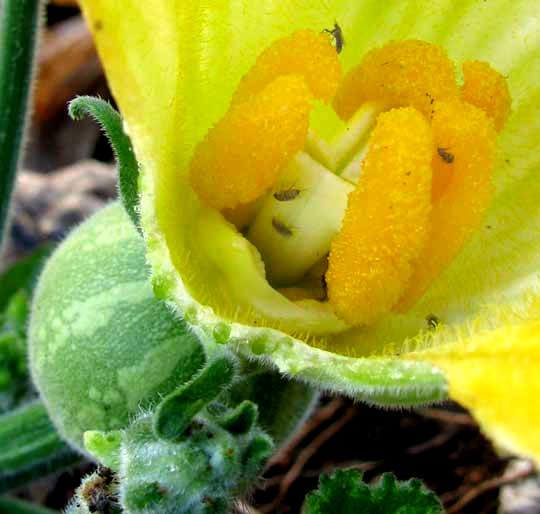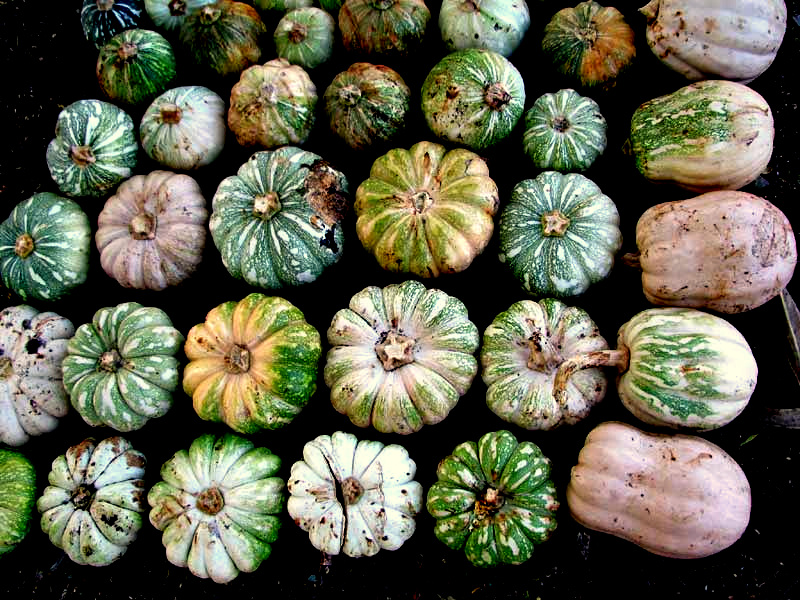Excerpts from Jim Conrad's
Naturalist Newsletter

from the November 28, 2010 Newsletter issued from Hacienda Chichen Resort beside Chichén Itzá Ruins, central Yucatán, MÉXICO; limestone bedrock, elevation ~39m (~128ft), ~N20.676°, ~W88.569°
SQUASH FLOWERS & FRUITS
Plenty of celebrating goes on at this time of year down here, but last Thursday was regarded as just another day. However, I remembered past Thanksgivings up North, so Thursday afternoon in the organic garden I found a squash, boiled it in a pot over my hut campfire, and that was my Thanksgiving supper.
Actually, I'm not sure what you'd call the item I ate. It's a traditional Maya crop, not really like what most English speakers think of as a squash, pumpkin or gourd. It was a cultivar of CUCURBITA PEPO, a native American species from which a rainbow of field pumpkins, yellow-flowered gourds and summer and bush squashes have been horticulturally derived. That's a leaf and flower of the thing I ate above.
Flowers in the Squash Family, the Cucurbitaceae, are unisexual. Since the flower in the above picture has a small fruit at its base, it's a female flower. A closer look inside that female flower is shown below:

The hairiness of the yellow corolla walls provides a foothold for pollinators entering the flower. The immature fruit beneath the corolla is a developing " inferior ovary," which means that the corolla arises above the ovary, not at its base, as with "superior ovaries." The ovary's slender neck, or style, has three branches, and at the tip of each style branch there's a two-lobed stigma. The stigma is where pollen from male flowers germinates. In the above picture, notice what appears to be a cup at the corolla's bottom. A pollinator busy inside the cup is gathering nectar. One side of the corolla has been removed so you can see both the cup and the developing fruit below:

The cantaloupe-size meal on my table is shown below:

You may recognize this squash as an "heirloom" variety sometimes known as the Globe Squash, Round Zucchini or Ronde de Nice. I'm not sure if it's the same thing. It may be the Maya ancestor of those cultivars.
I do know that the white seeds were as tasty as the flesh and that the flesh, when teased, became stringy. I've heard of "spaghetti squash," so maybe that's close to this. It tasted good, though not as sweet as field pumpkin or as flavorful as summer squash -- more like zucchini. The rind was like thin, brittle plastic, not as soft as regular Zucchini's.
from the December 12, 2010 Newsletter issued from Hacienda Chichen Resort beside Chichén Itzá Ruins, central Yucatán, MÉXICO; limestone bedrock, elevation ~39m (~128ft), ~N20.676°, ~W88.569°
RANDOM SQUASHES
This week Wilfrido cleaned up what remained of the traditional cornfield, or milpa. Most of the cornstalks already had been ridden down by coatis and stripped, the squash vines had died back leaving mature squash nestled among the weeds like Easter eggs, and the beans really hadn't amounted to anything this year. Mainly the job just entailed piling all the herbage into a heap for burning, and gathering all the squash in one place. You can see one corner of a large spread-out collection of squash/pumpkin fruits below:

Just how many different kinds of traditional Maya squash/pumpkin fruits are shown in that picture? We've already looked at the smallish Globe Squash, or Round Zucchini, represented in the picture's upper, left corner. It tastes like zucchini, but the others have a firmer texture and are sweeter, more like the Northern pumpkin.
Some people call the flattish, broadly ribbed fruits in the picture's center Striped Pumpkins. The one in the picture's lower, right corner is, or is close to, a Delicata. Most of the rest seem to be intermediate forms of these "pure types." As was the case with our previous Globe Squash, all these are just cultivars of the species CUCURBITA PEPO. They're like the many dog races, which eagerly intermingle if given a chance, since they're all the same species. Wilfrido thinks that all the Maya traditional squash types are shown, except for a small, black one, for which no seeds could be obtained.
Whatever they're called, it's always a pretty moment when the season's squash and pumpkins are all brought in and lined up for display, just in time for all the many fiestas celebrated at this time of year.